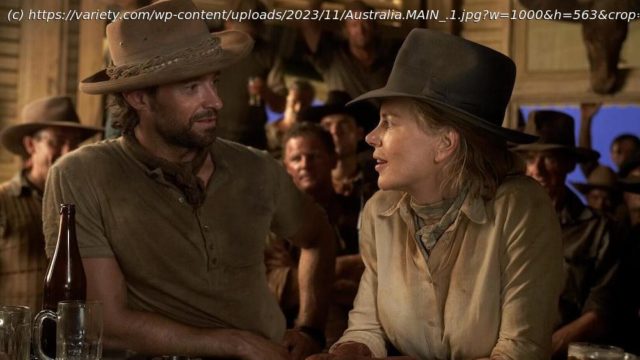Director Baz Luhrmann delves into why he created the Hulu series ‘Faraway Downs’ out of his 2008 film ‘Australia’ — and why he changed the ending.
This story contains spoilers from the film “Australia” and the limited series “Faraway Downs,” now streaming on Hulu.
Fifteen years after the release of his 2008 epic romance “Australia,” Baz Luhrmann still struggles to find the right words to sum up its production. In this particular interview, he settles on one –– “fraught.”
While shooting the film on location across its namesake continent, the native Australian director tried not to take it personally when the set-trained horses contracted a rare equine flu, or when the portion of the outback where they were filming received its first major rainfall in 150 years. But one thing after another repeatedly delayed production, and tested the cast and crew’s resilience.
“I don’t know why I’m addicted to making things that seem impossible to make,” Luhrmann tells Variety. “But of all my films, I have never faced the level of relentless obstacles I did on this one. I often tell people that if you are having trouble with vegetation and need things to grow, just have me come make a movie there. You’re guaranteed rain.”
All of these hindrances make Luhrmann’s eagerness to revisit the material a decade and a half later all the more inexplicable. And yet, he has recut and reimagined the movie “Australia” into a six-part limited series called “Faraway Downs,” now streaming Hulu. Whether it was unfinished business or a means of making peace with the very personal story, Luhrmann still isn’t sure.
“I feel like it is an experiment, and I think the implications of this could be far reaching,” he says.
By far Luhrmann’s least commercially successful film in America (although he says it’s his most popular in Europe), “Australia” stars Nicole Kidman as a posh British expat named Lady Sarah Ashley who teams up with Hugh Jackman’s grizzled cattle drover, known only as The Drover, to save Faraway Downs, a struggling Northern Australia cattle station owned by her late husband. When she meets a precocious aboriginal child named Nullah (Brandon Walters), Lady Ashley begins to embrace the wild lifestyle of the outback just as it becomes a target during World War II.
Since the film debuted in November 2008, Luhrmann has garnered acclaim for his successful directorial efforts, “The Great Gatsby” and “Elvis.” But when the latter production was shut down in March 2020 –– “when Tom Hanks famously got COVID,” he notes –– he found himself sequestered with an abundance of time, and an unexpected interest in reacquainting himself with the 2.5 million feet of film he’d shot for “Australia.”
“Because it’s a melodrama, it was already episodic,” he says. “At the end of each episode, there is a tragedy, and there’s a real reason why you want to know what happens next. Because we were compressing for a single film in the cinema, there were really valuable sequences and scenes that we didn’t put in. But here, they aren’t just padding. They are different ways of telling the story.”
He offers the example of an early scene immediately following the discovery that Lady Ashley’s husband has been killed.
Домой
United States
USA — Cinema Why Baz Luhrmann Changed the Ending of ‘Australia’ When Turning the Film...






